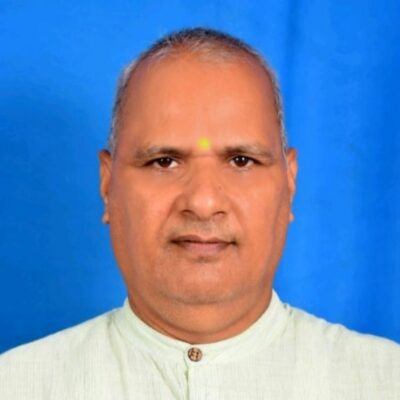Under the Guise of Religion

It has been the tendency of worldly people to prefer blind imitation over making efforts for their own progress. They feel more comfortable relying on some external support, anchor, or refuge rather than taking responsibility for their own upliftment. They lack the courage to work for their own welfare and do not have the mindset to liberate themselves through their own efforts. They always seek some form of support, under whose shelter they can rest easily. This tendency of slavery and dependence is prevalent to varying degrees in every part of the world. Surrendering oneself to someone else is a sign of mental weakness, and this mental weakness is found everywhere. It is common to see people making themselves slaves or dependents of religious gurus, storytellers, saints, monks, swamis, yogis, priests, pastors, mullahs, leaders, preachers, reformers, caste leaders, and others across the globe. These very people are responsible for inciting communal and sectarian conflicts. When someone blindly surrenders to another without thinking critically, they lose their ability to reason and make sound decisions. Such a person becomes a puppet in the hands of their guru, leader, or guide and is willing to commit even the most inhumane and immoral acts at their command. Communal, sectarian, casteist, and regional leaders, along with religious preachers, frequently incite the masses against one another, leading to riots and violence. When someone’s thinking is mortgaged to another, they can be easily manipulated to commit atrocities, murders, arson, violence, cow slaughter, communal riots, and massacres. Hence, it is said that being a blind devotee requires extreme foolishness. Those who have surrendered their intellect, reasoning, and decision-making abilities to others can be easily exploited to commit any immoral, irreligious, and inhumane acts. This tendency has been observed for centuries in Buddhist, Jewish, Christian, and Islamic sects, where millions of people have been killed due to communal violence and terrorism. Though blind devotees can kill anyone, the greatest victims have been followers of Sanatan Dharma. It is believed that over the past thirteen centuries, thirty-five crore Sanatanis have been massacred, apart from loot, rapes, destruction of temples, and forced conversions.
Sanatanis have not only suffered at the hands of the invaders—Yavanas, Mongols, Turks, Afghans, Mughals, and the British—but also during the three centuries of Buddhist rulers who inflicted numerous massacres, forced conversions, and plunder. It should be remembered that after the Mahabharata war, during the reign of the Gupta kings, India once again became the world’s guru, a global superpower, a golden bird, and a center of education. Following them, emperors like the Pals and Cholas further elevated India’s development and prosperity. However, the three hundred years of Buddhist rule were marked by bloodshed, forced conversions, and plunder. The Mughal era was an age of destruction, exploitation, conversions, and debauchery. Calling this period a golden age of art by communist writers reflects their ignorance, deceit, prejudice, fantasy, and anti-Sanatan bias.
Ashoka’s Religious Policy and Historical Misrepresentation
Emperor Ashoka and other rulers projected themselves more as Sanatanis than followers of Buddhism while spreading Dharma abroad. They succeeded because, before Ashoka, Sanatan sages, saints, and monks had been spreading the religion to foreign lands. Foreigners perceived Ashoka as a Sanatani preacher. However, Ashoka subtly transformed Sanatani temples and educational centers into Buddhist institutions. After Ashoka, the golden age of the Gupta dynasty continued for several centuries. Nalanda, Vikramshila, and several other world-renowned universities were established during the Gupta period, where various subjects such as Sanatan philosophy, Buddhism, Jainism, Charvaka, Shaivism, Tantra, Ayurveda, agriculture, astrology, grammar, and warfare were taught without any discrimination. Even at the time of Bakhtiyar Khilji’s invasion, these universities were not exclusively Buddhist, but this historical distortion was later propagated by Christian-influenced Buddhist writers, communists, Islamic scholars, and secular historians.
Decline of Buddhism and the Role of Communists
The decline of Buddhism began in the seventh and eighth centuries due to the influence of Vajrayana, which promoted indulgence in luxury and sensual pleasures. By the eleventh and twelfth centuries, after Bakhtiyar Khilji’s invasions, all Buddhist scholars fled with their texts to China, Burma, Mongolia, Thailand, Sri Lanka, Tibet, and other countries. Immersed in the indulgent practices of Vajrayana, they had no warriors left to defend their faith. Their monastic tendency had weakened India, and when danger struck, all the Buddhists fled. For the next thousand years, it was the Sanatanis who defended the land from foreign invaders and preserved Sanatan Dharma and culture. Ironically, the same Buddhists who abandoned India during the crisis have been accusing Sanatanis of destroying Buddhism for the past hundred years.
Even prominent gurus like Acharya Rajneesh have propagated such falsehoods, which is surprising. Where were these critics when China destroyed Buddhism in Tibet? It was the Sanatan Dharmis of India who extended support to the Dalai Lama. No communist, neo-Buddhist, indigenous thinker, Macaulayite, Sankrityayan, Romila Thapar, or Habib stood up against China. The communists have eradicated Buddhism from China and Tibet, but none of these individuals have written books on it, fought against China, or protested against Chinese oppression. Only Sanatan Dharmis have supported the Dalai Lama. The opponents of Sanatan Dharma have crossed all limits of hypocrisy, deceit, lies, and fraud.
The Hypocrisy of Modern Religious Leaders
Many of our contemporary religious leaders, politicians, storytellers, saints, authors, thinkers, and teachers today advocate for Buddhism while claiming to be Sanatanis. Though they call themselves Sanatanis, they still carry the Buddhist influence in their veins. They remember Buddha, Ashoka, and Gandhi more than Manu, Vashistha, Parashara, Shri Ram, Shri Krishna, Vidura, Bhishma, Yudhishthira, Ved Vyas, Chandragupta Maurya, Chanakya, Vikramaditya, Samudragupta, Shankaracharya, Kumarila, Mandan Mishra, Harsha Vardhana, Rana Pratap, Sangha, Shivaji, Govind Singh and Dayanand.
Do the so-called Sanatan leaders and religious gurus today teach their children Vedas, Upanishads, philosophy, grammar, or Nirukta? The harsh truth is that they do not. These self-proclaimed protectors of Sanatan Dharma send their children to Christian convent schools or foreign universities. It should be noted that Siddhartha Gautama never studied in a Gurukul. He was educated in seclusion at home. He did not gain the complete knowledge of scriptures that he should have. He preached based on his personal experiences and the knowledge he acquired from a few teachers, which mainly emphasized moral conduct, not philosophy.
Hijacking of Gautama Buddha’s Teachings
Today’s leaders, monks, and religious preachers have not embodied Gautama Buddha’s teachings but have hijacked them. Christians and neo-Buddhists have been at the forefront of this. The Theosophical Society and the Brahmo Samaj played significant roles in this hijacking. They even tried to trap Jiddu Krishnamurti but failed. As neo-Buddhists, they have succeeded to some extent in shaking India’s unity and integrity. Our constitutional system and some leaders have fallen prey to this strategy in their quest to secure the Dalit vote bank. India, Indians, and Indian culture continue to suffer due to this exploitation.
Over the past seven decades, our leaders, religious gurus, and reformers have caused immense harm to Sanatan Dharma, culture, philosophy, and history to fulfill their political ambitions, increase their followers, and satisfy their personal aspirations. Unfortunately, they are still engaged in this destructive pursuit.
Kapila’s Sankhya and Misunderstanding of Ancient Teachings
Siddhartha Gautama and Mahavira had studied Kapila’s Sankhya philosophy and learned yoga practices from Sankhya Acharyas. Sankhya is a doctrine derived from the Vedas. These great men opposed the frauds of their time—like today’s Rampal Das, Gurmeet Ram, Sai Baba, Brahma Kumaris—who were using religious rituals as a cover to fulfill their ambitions. However, they never opposed Sanatan Dharma itself. The same fraudulent elements that misuse religion today existed in their time as well, hiding behind the guise of Vedas, Upanishads, philosophy, and rituals to run their businesses.
Acharya Sheelak Ram
Department of Philosophy
Kurukshetra University
Kurukshetra – 136119

























